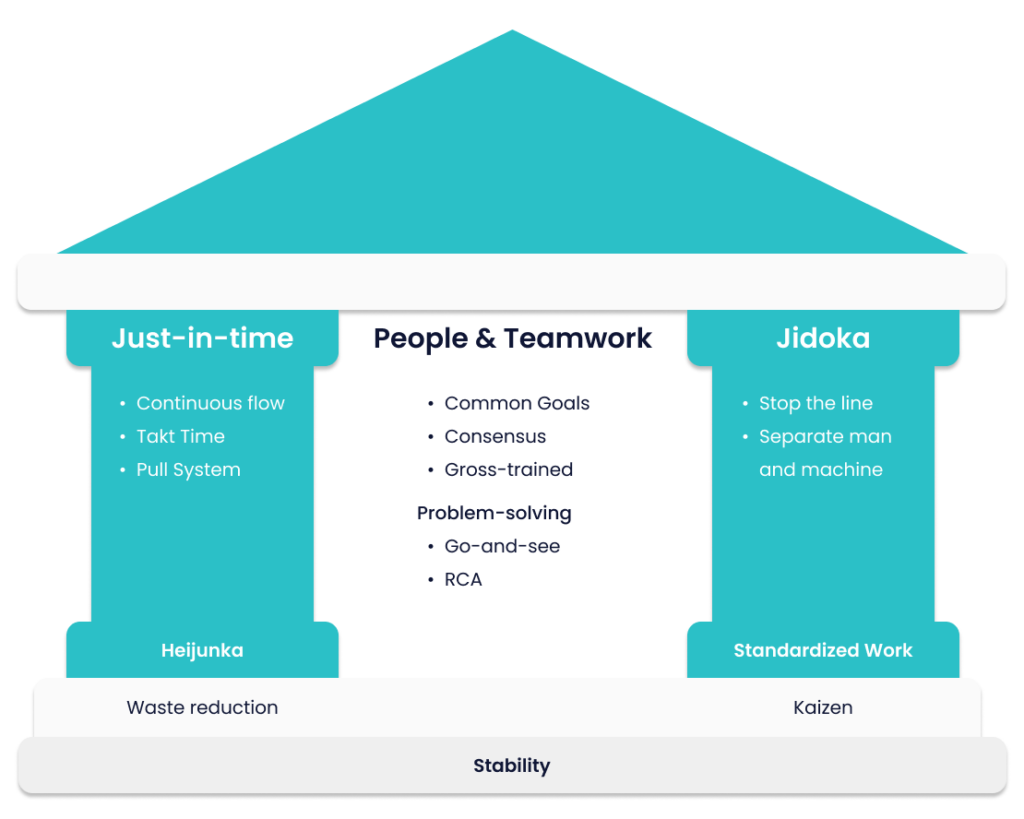
Gemba Walks explained
Read our complete guide to Gemba Walks in manufacturing, an essential technique to gain a first-hand understanding of production.

What is a Gemba walk?
A Gemba walk is a core practice in Lean manufacturing. It involves managers or supervisors going to the factory floor to engage with operators, look for wasteful activities, and discover opportunities for improvement.
Gemba is a Japanese word that means the actual place or the real place. In Lean manufacturing, this refers to the place where the most important, value-adding work occurs: the shop floor.
The underlying idea of Gemba is that managers and supervisors should regularly visit the workplace in order to gain a thorough and first-hand understanding of production. They can achieve this by both observing the processes and establishing relationships with the people who perform them.
Gemba, therefore, is essential in flattening out hierarchies in manufacturing organizations. It allows decision makers to receive input from the shop floor, ensuring that decisions are based on how work actually takes place.
Additionally, it ensures that workers feel they are valued and taken seriously by management.
Although a Gemba walk may sound like an intuitive, ad-hoc practice, it actually involves careful planning, dedication, and the right mindset.
In the next paragraphs, we will walk you through some of the basic tenets of Gemba walks.

How to do a Gemba Walk in 7 Steps
Step 1: Prepare
Before you set foot on the shop floor, it’s crucial you first determine what the purpose of your Gemba walk is. Do you want to improve a specific process? Or is there an area you want to effect improvements in?
Having plentiful data on shop floor activity, ideally visualized on dashboards, can help you detect these areas of improvement and determine a purpose for your Gemba
Step 2: Plan and Alert
Importantly, you want to avoid overwhelming frontline workers with your Gemba walks. It’s therefore important to schedule your Gemba and notify teams about it. This ensures your visit doesn’t surprise (and therefore conjure up resistance) workers. Additionally, it prevents your visit from disrupting potentially critical operations.
Step 3: Observe
This is a crucial step when it comes to executing your Gemba walk succesfully: observe, but do not disrupt. Remember, the goal of a Gemba walk is to gain insight into how work is performed on the shop floor, not to correct mistakes or criticize workers.
Instead, be attentive and write down your observations. Even if you notice mistakes, keep them to yourself, and discuss them later outside the shop floor. This will, in the minds of operators, establish Gemba visits, as a continuous improvement effort, instead of as a vehicle to cricitize worker behavior.

Step 4: Ask questions
The goal of Gemba is to engage with the shop floor and gather their insights on how work can be improved. Listen to workers actively and encourage them to share their insights, experiences, and challenges. Remember, the core of the Gemba philsophy is that the people who work in the actual place have the most valuable insight into how something can be improved.
Step 5: Note down your observations
After completing the Gemba, it’s crucial that you note down all relevant information that you have gathered during your walk. The success of any subsequent improvement projects depends on this step, so don’t wait too long after your Gemba before recording your observations, and don’t shy from being extensive.
Step 6: Follow-up
Last but certainly not least, it’s important to return to the workers you’ve talked to to share what you’ve learned and discuss. This allows you to collaborate further on potential solutions and improvements. Furthermore, it ensures that operators see the Gemba as a collaborative effort, instead of feeling that they have been watched or been criticized.

Gemba walk checklist example
A Gemba walk checklist can help you guide and structure your observations and the interactions with frontline workers. It will help you focus on the goal of the Gemba and not get side-tracked.
The exact questions depend on the area, process, or bottleneck you are investigating. However, here is a list with some typical questions a Gemba walk checklist may include. Feel free to customize and tweak this based on your processes and the characteristics of your investigation.
- Are operators adhering or deviating from standard operating procedures (SOPs)?
- Are the materials and products flowing as intended, or are there any bottlenecks?
- Do you notice any wasteful activities, like idling or unnecessary transporation of equipment?
- Does the work area look clean and well-organized?
- Do you notice any unsafe situations, hazards, or unsafe behavior?
- What are the challenges workers face in their daily work?
- How is the communication structured within a team?
Related Articles

Everything You Need to Know About Continuous Improvement

Manufacturing Glossary
